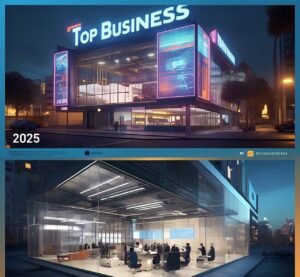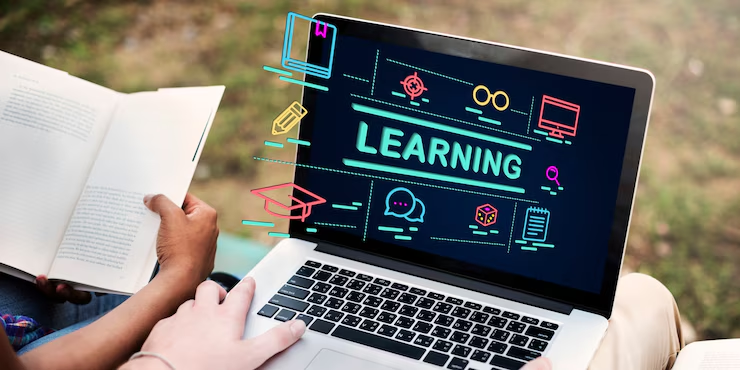
While online commerce continues to surge, entrepreneurs are discovering lucrative new frontiers in physical retail—this is where the smart money is building real-world businesses in 2025
Whether E-commerce, and virtual experiences, it might seem counterintuitive to focus on offline business opportunities. However, the pendulum of consumer preference is swinging back toward authentic, tangible experiences that cannot be replicated through a screen. As we move into 2025, certain offline business models are positioned not just to survive but to thrive by addressing fundamental human needs for connection, personalization, and physical experiences.
The COVID-19 pandemic accelerated digital adoption across all sectors, but it also highlighted the irreplaceable value of in-person interactions and services. Many consumers now seek a balanced approach—embracing technology where it adds convenience while craving meaningful physical experiences that digital alternatives simply cannot provide.
This article explores the most promising offline business opportunities for 2025, examining market trends, startup considerations, and growth potential across various sectors. Whether you’re an entrepreneur looking for your next venture, an investor seeking promising brick-and-mortar opportunities, or a business owner considering a pivot, these insights will help you navigate the evolving nature of offline commerce in 2025 and beyond.
Specialized Health and Wellness Services
The health and wellness industry has undergone a profound transformation, moving beyond generic fitness centers and traditional healthcare models toward highly specialized, personalized approaches. This shift represents one of the most promising areas for offline business development in 2025.
Personalized Fitness Studios
Generic big-box gyms are increasingly being replaced by boutique fitness studios that cater to specific demographics, goals, or health conditions. These specialized establishments offer several competitive advantages:
Market Opportunity
The global fitness industry is projected to reach $434.74 billion by 2028, with boutique fitness representing the fastest-growing segment. What’s driving this growth? Consumers increasingly seek fitness solutions tailored to their specific needs rather than one-size-fits-all approaches.
Business Models to Consider
- Senior-Focused Fitness Centers: As the population ages, there’s growing demand for fitness facilities specifically designed for older adults. These centers feature equipment modified for aging bodies, classes focused on balance and fall prevention, and trainers specialized in working with seniors and age-related conditions like arthritis and osteoporosis.
- Post-Rehabilitation Fitness: Bridging the gap between physical therapy and conventional fitness, these studios work closely with healthcare providers to develop exercise programs for individuals recovering from injuries, surgeries, or managing chronic conditions. This model benefits from the growing emphasis on preventative care and reducing hospital readmissions.
- Condition-Specific Training: Studios focusing exclusively on exercises for specific health conditions—such as diabetes management, prenatal and postnatal fitness, or autoimmune-friendly workouts—can attract loyal clientele who feel their needs are overlooked in traditional fitness environments.
Implementation Considerations
Starting a specialized fitness studio requires:
Specialized certification and training for staff
Potential partnerships with healthcare providers for referrals
Customized equipment and facility design
Do easy tasks online to earn straight to your naira account: Start Earning
Compliance with healthcare privacy regulations if offering medical-adjacent services
Mental Wellness Centers
Mental health has moved from the periphery to the center of wellness discussions, accelerated by the stress and isolation of the pandemic years. Physical spaces dedicated to mental wellbeing represent significant business opportunities in 2025.
Market Opportunity
The global mental health market is expected to reach $537.97 billion by 2030, with growing acceptance of mental health services and increasing insurance coverage driving demand for innovative service delivery models.
Business Models to Consider
- Integrated Therapy Centers: Facilities offering multiple therapy modalities under one roof—from traditional counseling and psychiatry to art therapy, somatic experiencing, and EMDR (Eye Movement Desensitization and Reprocessing)—provide clients comprehensive care without navigating multiple providers.
- Meditation and Mindfulness Studios: Dedicated spaces offering guided meditation sessions, mindfulness training, breathwork classes, and stress reduction programs create community around mental wellness practices. These can operate on membership models, class packages, or drop-in fees.
- Corporate Wellness Partnerships: Centers providing on-site or near-site mental health services for businesses recognize the growing corporate investment in employee mental health. These centers can offer specialized programs addressing workplace stress, burnout prevention, and emotional intelligence development.
Implementation Considerations
Key factors for success include:
Unlock the Secret: How to Earn up to $200+ Daily with Simple Tasks!
Get exclusive access to the platform hundreds of Africans use to make money right from their phone. No experience needed.
Yes, Tell Me More! →Creating physically calming, accessible environments
Building a team of credentialed professionals
Developing strong privacy protocols and HIPAA compliance systems
Do easy tasks to earn staright to your naira account: Start Earning
Establishing referral networks with healthcare providers
Navigating insurance relationships and reimbursement processes
Integrative Health Clinics
Consumer healthcare preferences are evolving toward holistic approaches that combine conventional medicine with complementary therapies. Integrative health clinics meeting this demand represent substantial opportunities for healthcare entrepreneurs.
Market Opportunity
The global complementary and alternative medicine market is projected to reach $404.66 billion by 2028, driven by growing consumer interest in whole-person approaches to health and increasing physician acceptance of evidence-based complementary therapies.
Business Models to Consider
- Functional Medicine Centers: Clinics focusing on identifying and addressing root causes of chronic health conditions through comprehensive testing, nutritional interventions, lifestyle modifications, and personalized treatment plans. These centers often operate on membership or package-based models rather than traditional fee-for-service approaches.
- Multi-Disciplinary Wellness Clinics: Facilities housing practitioners across specialties—physicians, naturopaths, acupuncturists, chiropractors, nutritionists, and mental health professionals—who collaborate on patient care. This model reduces fragmentation in healthcare delivery and improves patient outcomes through coordinated approaches.
- Preventative Health Centers: Businesses focusing exclusively on preventing disease through comprehensive health assessments, biometric screening, genetic testing, personalized nutrition and fitness programming, stress management, and sleep optimization.
Implementation Considerations
Important factors include:
Navigating complex healthcare regulations and licensing requirements
Establishing credibility through evidence-based approaches and qualified practitioners
Creating efficient systems for interdisciplinary collaboration
Developing technology infrastructure for health tracking and communication
Building relationships with conventional healthcare providers for referrals
Sustainable and Local Retail
Consumer awareness around environmental impact and interest in supporting local economies is driving significant changes in retail preferences. Businesses that align with these values are positioned to capture market share from traditional retail models.
Zero-Waste Stores
The zero-waste movement has graduated from niche interest to mainstream concern, creating opportunities for retail concepts that eliminate packaging waste and promote sustainable consumption.
Market Opportunity
The global zero-waste packaging market is expected to reach $10.97 billion by 2030, with studies showing that over 70% of consumers are willing to pay more for sustainable products and experiences.
Business Models to Consider
- Package-Free Grocery Stores: Retail establishments where customers bring their own containers to purchase bulk foods, spices, oils, vinegars, and cleaning products. These stores typically feature weighing stations where containers are tared before filling, with customers paying only for the product weight.
- Refill Stations: Smaller-footprint retail concepts, sometimes mobile or pop-up, focusing exclusively on refillable household cleaning products, personal care items, and pantry staples. These can operate as standalone businesses or as sections within existing retail environments.
- Zero-Waste Home Goods: Stores specializing in durable, sustainable alternatives to disposable household products—from kitchen tools and cleaning implements to personal care items—with emphasis on biodegradable materials, repairability, and lifetime warranties.
Implementation Considerations
Key considerations include:
Sourcing truly sustainable products with verifiable supply chains
Developing efficient inventory management systems for bulk products
Creating user-friendly weighing and pricing systems
Educating consumers on zero-waste shopping practices
Ensuring compliance with local health department regulations for bulk food handling
Locally-Sourced Markets
Consumer interest in product provenance and supporting local economies has created opportunities for retail concepts that showcase regional products and tell producer stories.
Market Opportunity
The “buy local” movement continues to strengthen, with studies showing approximately 70% of consumers willing to pay a premium for locally produced goods. This trend is particularly strong among millennials and Gen Z consumers who prioritize authenticity and community connection.
Business Models to Consider
- Hyper-Local Food Markets: Grocery establishments sourcing exclusively from producers within a defined radius (typically 100-200 miles), featuring seasonal produce, regional specialties, and artisanal products with complete transparency about sourcing and production methods.
- Local Maker Marketplaces: Retail spaces showcasing products from local artisans, craftspeople, and small manufacturers—from furniture and home goods to clothing, jewelry, and art—often with opportunities for consumers to meet makers or watch demonstration workshops.
- Regional Specialty Shops: Stores celebrating the unique products of a specific region or locality, becoming destinations that support local tourism while serving resident communities. These might focus on regional foods, wines, crafts, or other distinctive products.
Implementation Considerations
Important factors include:
Building relationships with reliable local producers and ensuring consistent supply
Creating compelling storytelling around products and producers
Developing efficient systems for working with multiple small suppliers
Balancing higher product costs with consumer willingness to pay premiums
Creating educational components that help consumers understand the value of local sourcing
Repair and Upcycling Shops
As concerns about waste and resource consumption grow, businesses that extend product lifecycles through repair, restoration, and creative reuse are finding expanding markets.
Market Opportunity
The global refurbished and used goods market is expected to reach $378.2 billion by 2030, driven by environmental awareness, desire for unique items, and economic considerations. This represents a significant shift from pure consumption toward more sustainable circular economic models.
Business Models to Consider
- Repair Cafés and Fix-It Shops: Businesses offering repair services for electronics, appliances, furniture, clothing, and other items, sometimes featuring educational components where customers can learn repair skills. These may operate on service fee models or membership structures where customers get access to tools, space, and expert guidance.
- Upcycled Goods Retailers: Stores selling products made from reclaimed or repurposed materials—from clothing made of vintage fabrics to furniture created from architectural salvage—appealing to consumers seeking unique items with reduced environmental impact.
- Restoration Workshops: Specialized businesses focusing on bringing vintage items back to their original glory—whether furniture, musical instruments, classic cars, or architectural elements—combining craftsmanship with preservation of cultural heritage.
Implementation Considerations
Key considerations include:
Developing specialized restoration and repair skills or building a team with diverse expertise
Creating efficient systems for inventory acquisition and evaluation
Establishing appropriate pricing models that reflect skilled labor while remaining competitive
Educating consumers about the value of repair versus replacement
Building relationships with sources for quality used materials or items for restoration
Experience-Based Businesses
Perhaps the strongest case for offline business in the digital age is the human desire for immersive, multisensory experiences that cannot be duplicated through screens. This category represents substantial growth opportunities across multiple sectors.
Immersive Entertainment Venues
As digital entertainment becomes increasingly accessible at home, consumers seek distinctive out-of-home experiences that offer novelty, social interaction, and physical engagement.
Market Opportunity
The global location-based entertainment market is projected to reach $25.4 billion by 2028, with consumers demonstrating willingness to pay premium prices for unique, shareable experiences.
Business Models to Consider
- Advanced Escape Rooms and Puzzle Venues: Moving beyond simple locked-room scenarios, next-generation escape experiences incorporate theatrical elements, multiple rooms with progressive narratives, special effects, and technology integration for enhanced immersion. These businesses can operate on tiered pricing models offering various difficulty levels and experience durations.
- Interactive Performance Spaces: Venues hosting immersive theater, where audiences become active participants in narratives unfolding around them rather than passive observers. These experiences can incorporate elements of gaming, puzzle-solving, and choose-your-own-adventure storytelling.
- Mixed Reality Experience Centers: Physical venues where augmented reality technologies enhance real-world environments, creating experiences impossible to replicate at home. These might include AR-enhanced mazes, historical recreations where visitors interact with virtual figures from the past, or collaborative problem-solving scenarios.
Implementation Considerations
Important factors include:
Designing experiences with replay value or regular content refreshes to encourage return visits
Creating appropriate difficulty levels that challenge without frustrating participants
Developing efficient reset protocols between customer groups
Training staff in both technical operation and customer experience enhancement
Balancing technology investment with narrative development and physical environment design
Culinary Experience Centers
Food experiences continue to evolve beyond traditional restaurant models toward interactive, educational, and highly specialized culinary encounters.
Market Opportunity
Experiential dining is projected to grow at a CAGR of 5.8% through 2028, with particular strength in urban markets and among consumers seeking authentic connections with food traditions and production.
Business Models to Consider
- Interactive Cooking Schools: Venues offering hands-on cooking classes ranging from basic skills to specialized techniques, often featuring guest chefs, cultural themes, or seasonal focuses. These businesses can generate revenue through class fees, retail sales of kitchen equipment, and food and beverage sales.
- Chef’s Table and Micro-Restaurants: Ultra-small-format dining establishments serving limited numbers of guests with direct chef interaction, often featuring tasting menus with detailed explanations of ingredients, techniques, and inspirations. These venues typically command premium prices for their exclusivity and personalized experience.
- Food Tourism Hubs: Destinations combining multiple food experiences—markets, tasting rooms, demonstration kitchens, specialty food producers—creating half-day or full-day experiences for visitors seeking deep engagement with regional food cultures.
Implementation Considerations
Key factors for success include:
Designing flexible spaces that can accommodate different types of culinary activities
Building relationships with local food producers and suppliers
Developing programming that appeals to various skill levels and interests
Creating appropriate food safety protocols for interactive experiences
Balancing educational content with entertainment value
Maker Spaces and Workshops
As digital work dominates many professions, interest in hands-on crafts and tangible creation has grown, creating opportunities for businesses that facilitate skill development and creative expression.
Market Opportunity
The global arts and crafts market is expected to reach $50.9 billion by 2028, with particular growth in adult participation classes and workshops focused on traditional crafts and making techniques.
Business Models to Consider
- Multi-Craft Studios: Facilities offering workspace, equipment, and instruction across various crafts—from woodworking and metalsmithing to ceramics, textiles, and printmaking—operating on membership models or class fee structures.
- Specialized Craft Workshops: Venues focusing deeply on a single craft area, such as glassblowing, leatherworking, or jewelry making, offering progressive learning opportunities from beginner to master classes, often combined with retail components selling both supplies and finished products.
- Traditional Skills Centers: Businesses preserving and teaching heritage crafts and skills that risk being lost—such as blacksmithing, basket weaving, or hand bookbinding—appealing to those seeking connections with traditional practices and cultural heritage.
Implementation Considerations
Important considerations include:
Investing in appropriate equipment and creating safe working environments
Developing progressive curriculum that allows skill development over time
Building a team of qualified instructors with both technical expertise and teaching ability
Creating appropriate membership structures and class pricing
Navigating insurance and liability considerations for workshop environments
Community-Focused Services
The fragmentation of traditional community structures has created opportunities for businesses that facilitate meaningful connection and address evolving social needs. These models often combine commercial viability with positive social impact.
Intergenerational Daycare
Combining childcare and senior activities creates mutual benefit across age groups while addressing care needs for both populations.
Market Opportunity
With the dual challenges of an aging population and ongoing childcare shortages, intergenerational care models address multiple market needs simultaneously. Studies show significant benefits for both seniors and children in these settings, including improved cognitive function for older adults and enhanced social development for children.
Business Models to Consider
- Integrated Care Facilities: Centers where childcare and senior activities occur in the same facility with both separate age-appropriate spaces and designated areas for intergenerational activities. These typically operate on monthly membership or regular attendance models.
- Preschool Programs in Senior Communities: Educational programs for young children housed within existing senior living facilities, creating natural opportunities for meaningful interaction while maximizing use of existing infrastructure.
- Intergenerational Activity Centers: Drop-in facilities where families with children and older adults can participate in structured activities together—from art projects and gardening to storytelling and music—creating community connections without full-day care components.
Implementation Considerations
Key factors include:
Navigating different regulatory requirements for childcare and senior services
Designing spaces that are safe and appropriate for different age groups
Developing programming that meaningfully engages both populations
Creating appropriate staffing models with expertise across age groups
Building trust with families through transparent operations and clear communication
Community Learning Hubs
As formal education becomes increasingly expensive and often disconnected from practical skills, businesses facilitating knowledge sharing and skill development can address important market gaps.
Market Opportunity
The alternative education market has seen significant growth, with increasing interest in practical skills, sustainable living practices, and knowledge sharing outside traditional educational institutions.
Business Models to Consider
- Practical Skills Academies: Centers offering classes and workshops in everyday life skills often neglected in formal education—from basic home repairs, car maintenance, and cooking to financial literacy, conflict resolution, and digital privacy.
- Sustainability Education Centers: Facilities focused on teaching skills for more sustainable living—including gardening, food preservation, natural building techniques, renewable energy systems, and resource conservation strategies.
- Hybrid Work Spaces: Flexible environments combining co-working areas with child-friendly zones where parents can work while their children engage in supervised educational activities nearby.
- Health Optimization Clinics: Personalized wellness centers integrating conventional medical testing with nutrition counseling, stress management techniques, sleep optimization, and preventative health strategies.
- Intergenerational Community Hubs: Venues designed to foster meaningful connections between different age groups through shared activities, mentorship programs, and knowledge exchange initiatives.
- Technological Adaptation Services: Businesses helping older adults navigate and utilize modern technology, from smartphone basics to online safety and digital communication tools.
- Local Food Ecosystems: Enterprises connecting local farms, food processors, distributors, and consumers through innovative distribution systems, subscription models, and food education.
- Mental Wellness Studios: Spaces offering evidence-based mental health support through meditation classes, stress reduction workshops, cognitive behavioral therapy groups, and mindfulness training.
- Circular Economy Marketplaces: Platforms facilitating the reuse, repair, and repurposing of goods through repair cafés, upcycling workshops, and secondhand exchanges.
- Personalized Learning Centers: Educational services using adaptive technologies and individualized approaches to help learners of all ages master new skills and subjects based on their specific learning styles and pace.
- Community Resilience Networks: Organizations helping neighborhoods prepare for and respond to challenges through emergency preparedness training, resource sharing systems, and community-building initiatives.
- Environmental Restoration Services: Businesses specializing in rewilding urban spaces, improving biodiversity, restoring natural habitats, and creating green infrastructure solutions.
- Personal Data Management: Services helping individuals protect, organize, and leverage their personal data in increasingly digitized systems while maintaining privacy and security.
- Modern Craftsmanship Guilds: Organizations reviving traditional crafts with modern applications—connecting artisans with consumers seeking handmade, sustainable alternatives to mass-produced goods.
- Life Transition Support: Services guiding people through major life changes like career shifts, retirement planning, relocation, or adapting to empty nesting with practical and emotional support.




Chicken Road slothttps://apkpure.com/p/app.chickenroad.game
Reading your work felt like discovering a new language — one that speaks directly to the heart while still offering intellectual depth.